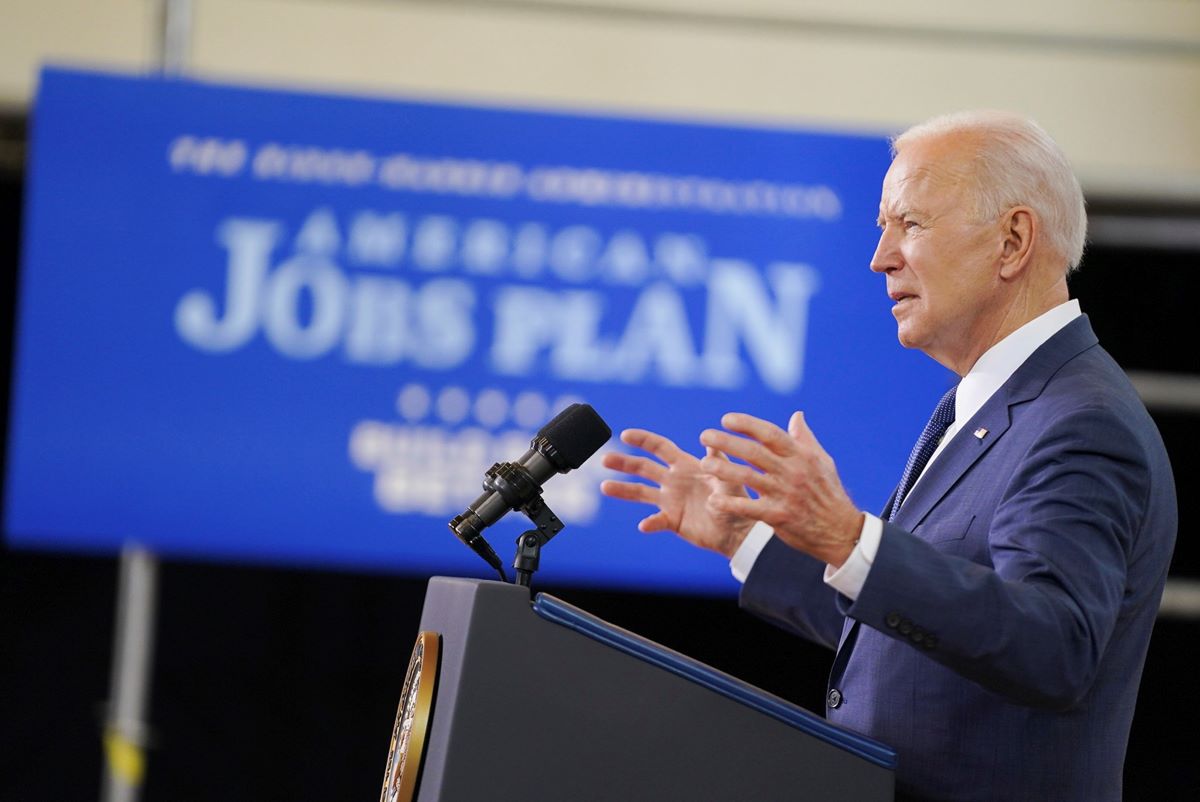The American Jobs Plan is an important step forward for housing policy in the United States. It identifies housing as a critical piece of the nation’s infrastructure and addresses the impacts of environmental racism on residents in federally subsidized housing.
In all, $213 million of the plan’s $2 trillion total investment is going to “produce, preserve, and retrofit more than two million affordable and sustainable places to live.” This will be achieved “through grants, formula funding, targeted tax credits and project-based rental assistance.”
Another $40 billion is earmarked for projects that improve the quality and energy efficiency of the country’s public housing system. This effort includes an additional $27 billion investment in partnerships with union trade organizations to upgrade homes through block grant programs like the Weatherization Assistance Program.
President Joe Biden said the plan is bold. If passed, it would be an essential part of rebuilding the economy “from the bottom up and from the middle out, not the top down.”
The plan has already garnered support from a diverse coalition of private and nonprofit organizations, including the California Association of Realtors (CAR), the American Trucking Association, and Rails-to-Trails Conservancy (RTC), an active-transportation advocacy organization.
CAR President Dave Walsh said the plan could help address the housing shortage currently crippling several housing markets.
“California, like the rest of the nation, is facing a severe housing shortage that must be addressed at every level of government,” he said. “Our nation needs to build more homes to stem the housing crisis facing the country.”
Similarly, Kevin Mills, vice president of policy at RTC, described the plan as a “chance to be explicit about creating and connecting active-transportation infrastructure.”
“The Biden Administration’s proposal is a blueprint for prioritizing transportation infrastructure investments,” Mills said. “They’ve outlined laudable goals for the country that go beyond building more roads and highways to move more vehicles.”
Environmental Justice for Public Housing
One of the most important connections that Biden’s plan makes is fair housing legislation with environmental justice issues. These two areas have long operated in different siloes for policymakers and advocates.
A study by The Shriver Center on Poverty Law found more than 77,000 Americans currently reside near Superfund sites. These contaminated sites are often the remnants of manufacturing facilities, processing plants, landfills, and mining sites.
According to the Shriver Center, nearly 60 percent of the nation’s public housing options are near Superfund sites. Living near these sites exposes residents to harmful chemicals in the air, groundwater, and surface water. They have also been linked to higher cancer levels, birth defects, developmental disabilities, and other serious health issues.
Part of Biden’s strategy to address these issues includes ending tax preferences for fossil fuel and other polluting industries. He said the provision would put the country on a path to net-zero emissions by 2050. At the same time, it would raise vital capital to conduct necessary large-scale cleanups of these sites.
Simultaneously, the Biden administration is making essential investments in the public housing system, which languished under former President Donald Trump.
Over his four years in office, Trump made drastic cuts to the nation’s public housing stock. In 2020, his administration cut $9.6 billion from HUD, an 18 percent overall reduction in funding from 2019. These cuts included taking 15 percent out of the Section 202 program, a grant that helps public assisted living and senior homes afford maintenance repairs.
Biden has since made it his administration’s priority to redress the past’s discriminatory housing practices and policies. This priority begins with updating public housing units.
In February, HUD awarded over 2,900 public housing authorities over $2.7 billion to renovate and modernize units. The American Jobs Plan will commit further resources to the issue by promising to partner with trade organizations to provide solar power and other energy-efficient amenities.
A New Environment for Housing
Housing is not often considered a necessary element of the nation’s infrastructure like roads and bridges. However, infrastructure can significantly impact housing options. To this end, Biden’s plan addresses irresponsible transportation system designs that have shut many communities out of the economy.
For example, Biden’s plan will invest $261 billion to modernize public transportation systems and expand access to railways, light rail trains, and electric vehicles. The plan says these investments will help “mitigate socio-economic disparities, advance racial equity, and promote affordable access to opportunity.”
A study by the Public Integrity Project found an increasing number of homes and schools are located next to major highways. Harvard’s School of Public Health has linked this to increased incidences of respiratory disease and other severe ailments in the nearby community.
Meanwhile, a study of federal traffic data by the Governors Highway Safety Association found U.S. roadways were 20 percent more lethal in 2020 than in 2019. This is despite a significant decrease in road usage because of the pandemic.
Mills argues that the plan addresses the “vital issue of bicyclist and pedestrian safety,” one that shows the need to wed active-transportation infrastructure to urban design.
Research by RTC shows that active-transportation infrastructure—such as walking or biking trails—can generate $34.1 billion annually in economic activity. It can potentially become a $138 billion venture. This additional revenue can go a long way toward constructing affordable housing and increasing alternative mobility options for all residents.
For Mills, utilizing a city’s natural surroundings to address disparities in mobility options is “essential to delivering economic gains, climate protection and equitable communities.”
“Year after year, rates of walking and biking increase—accelerated significantly by the pandemic. It’s time for federal policy to align with what the American people have shown they want,” Mills said.













